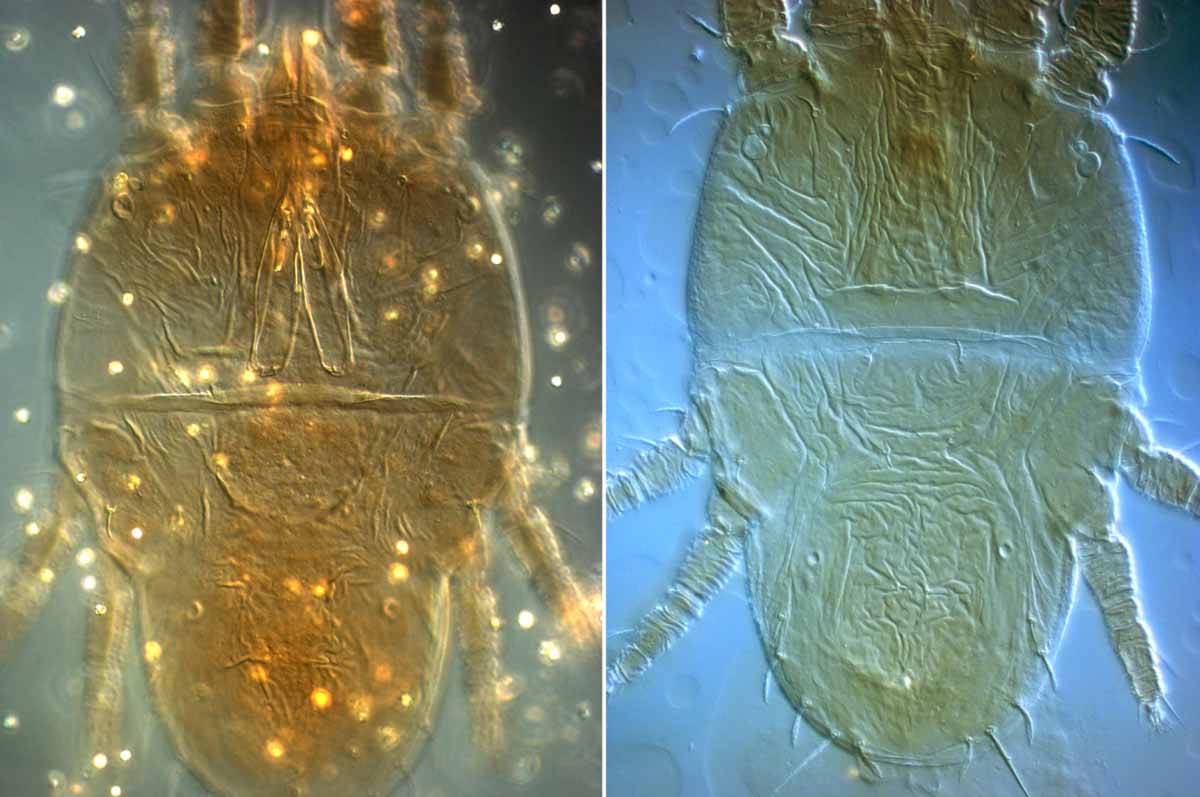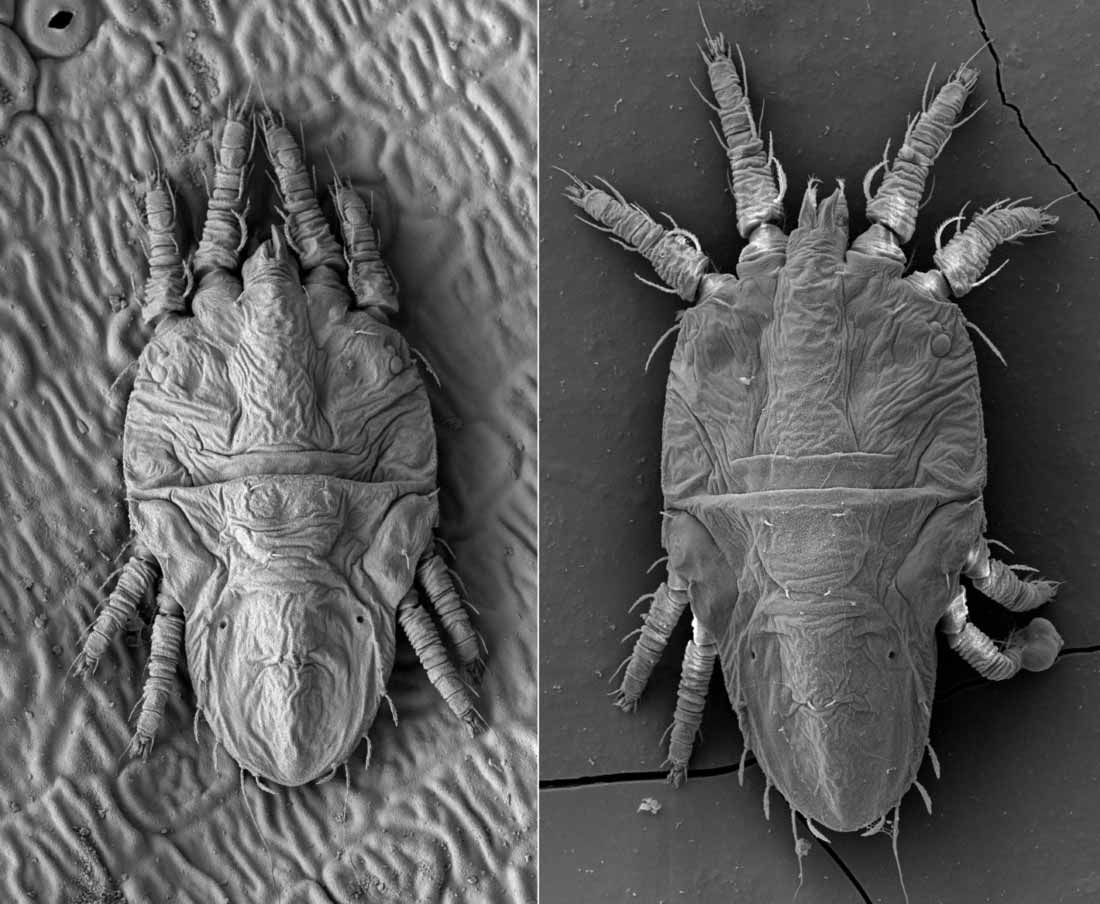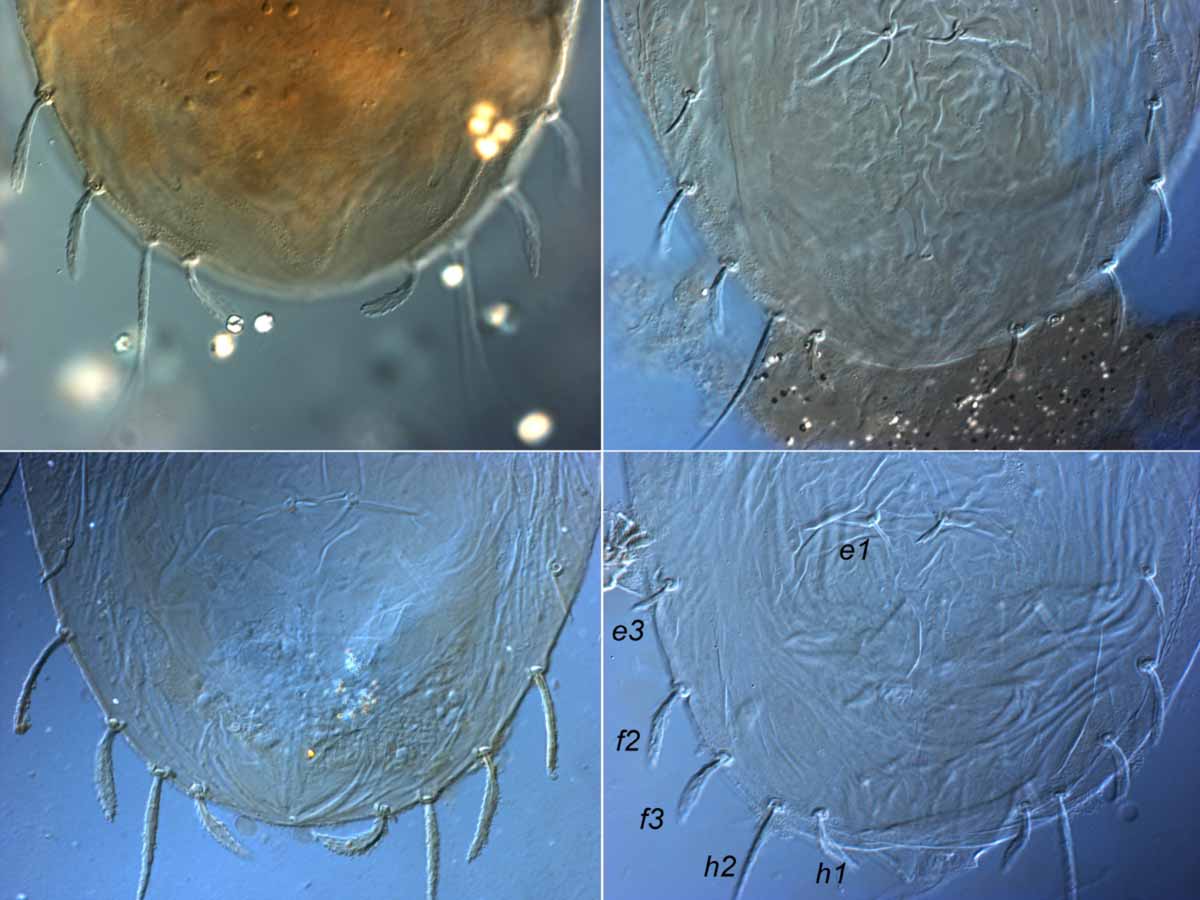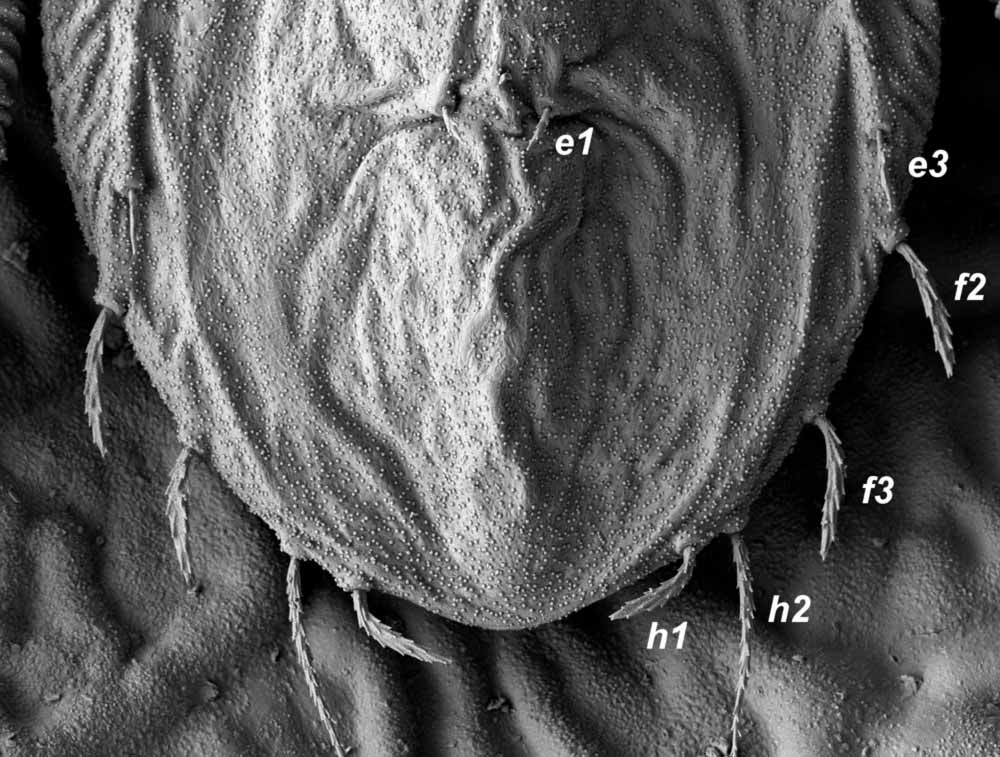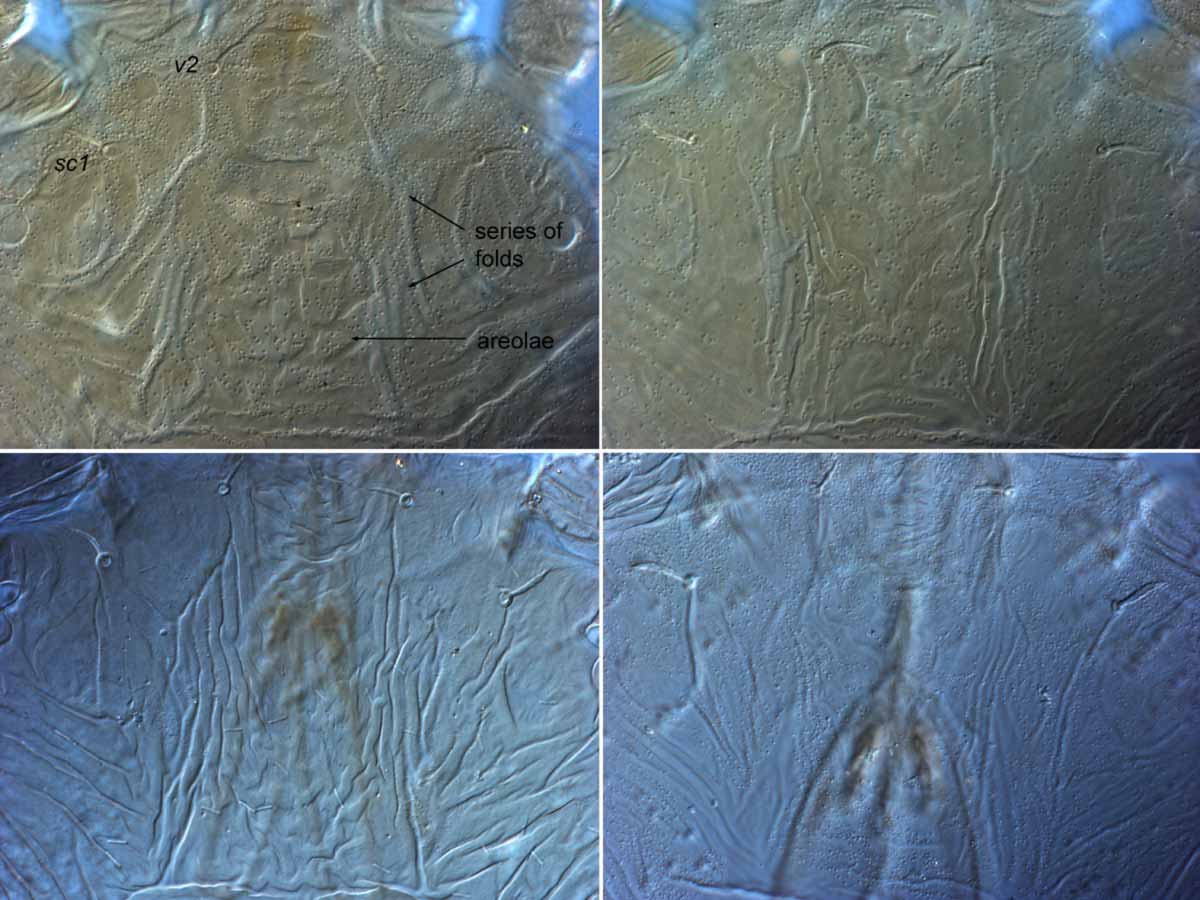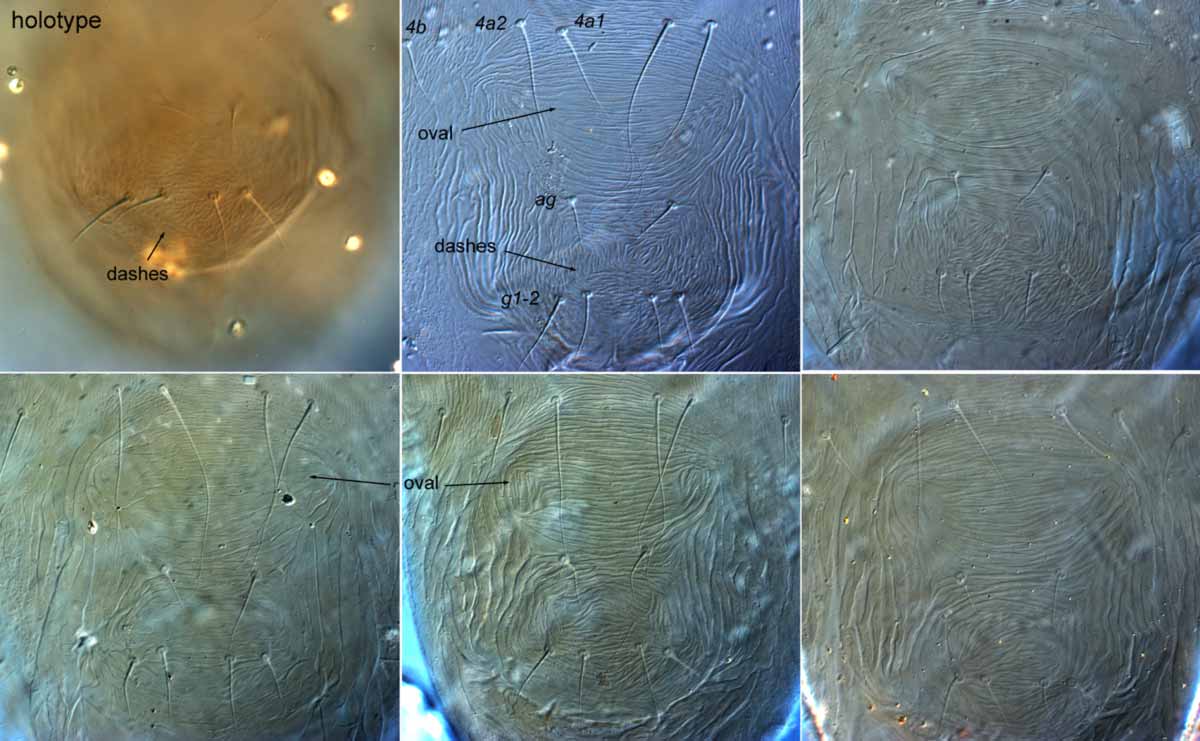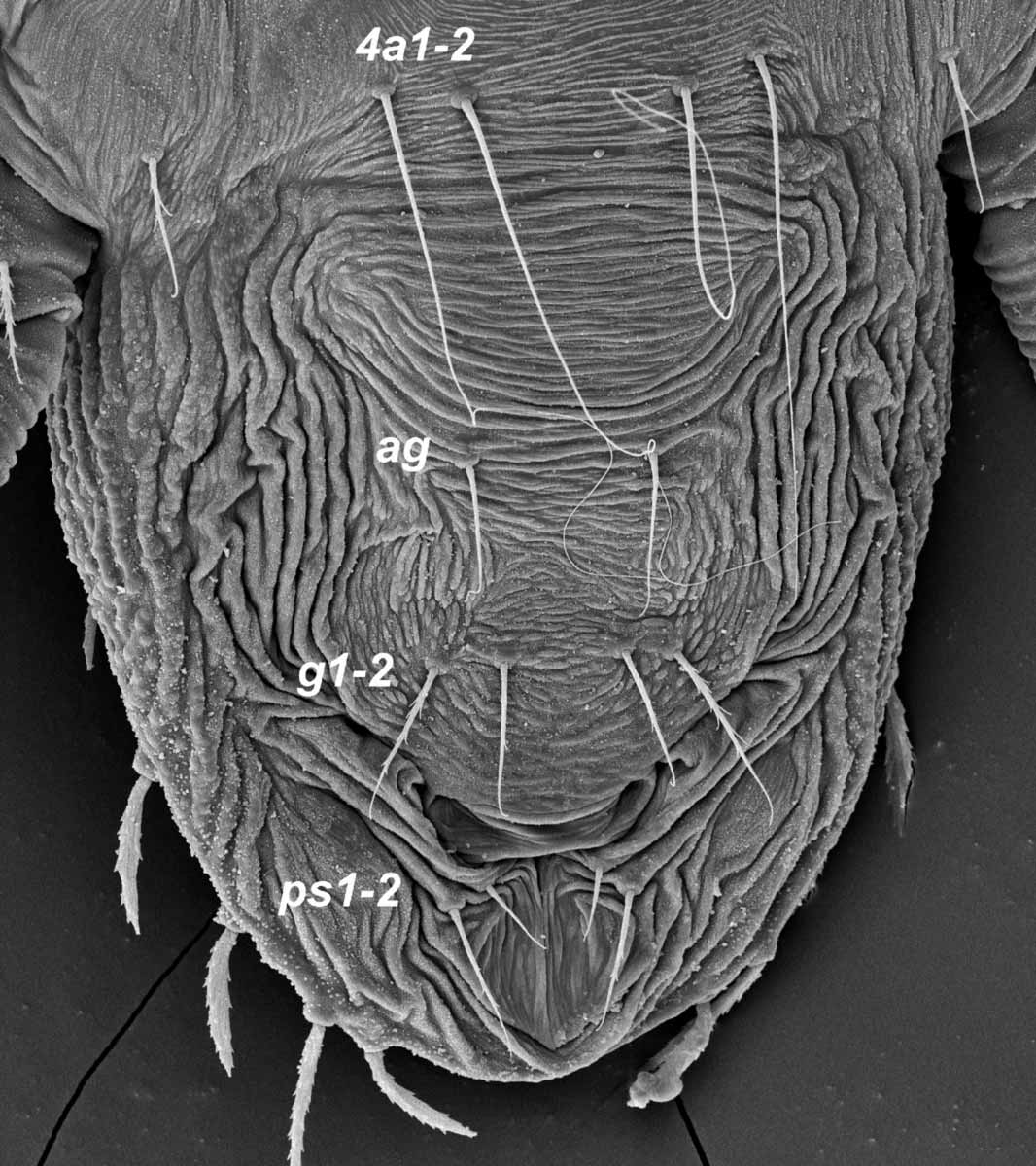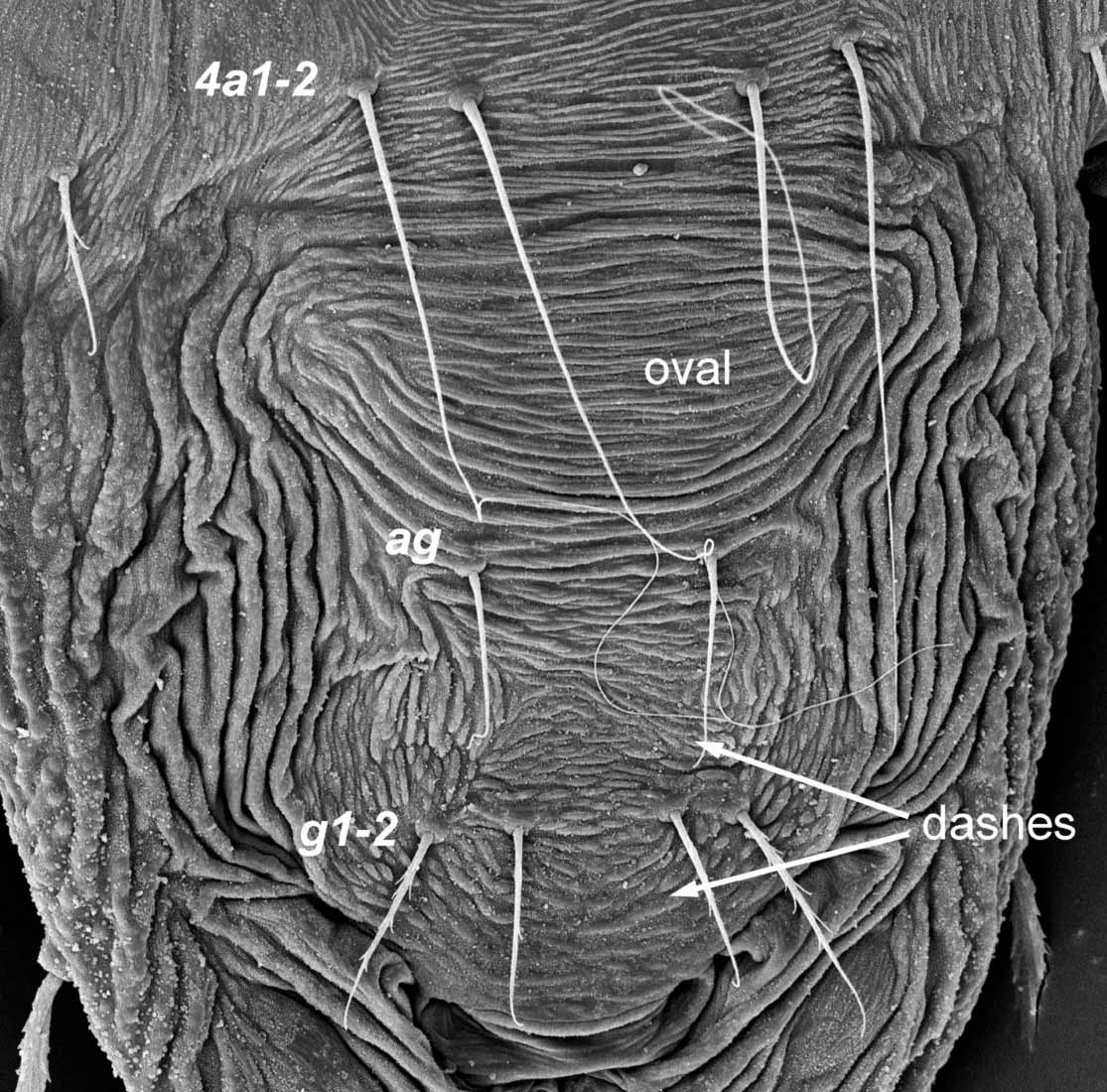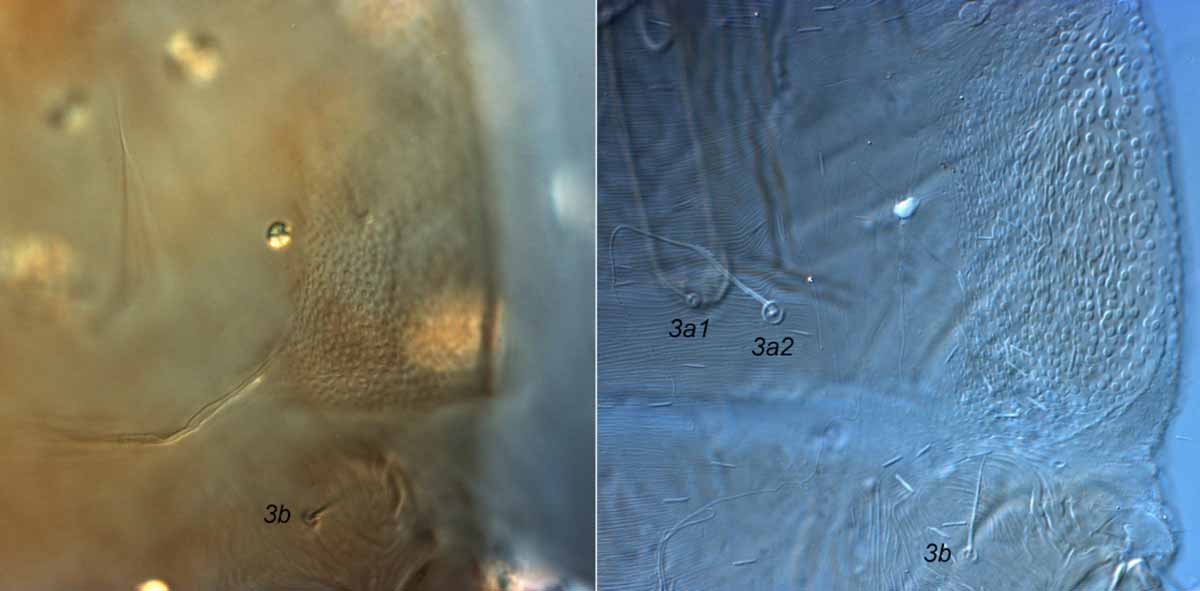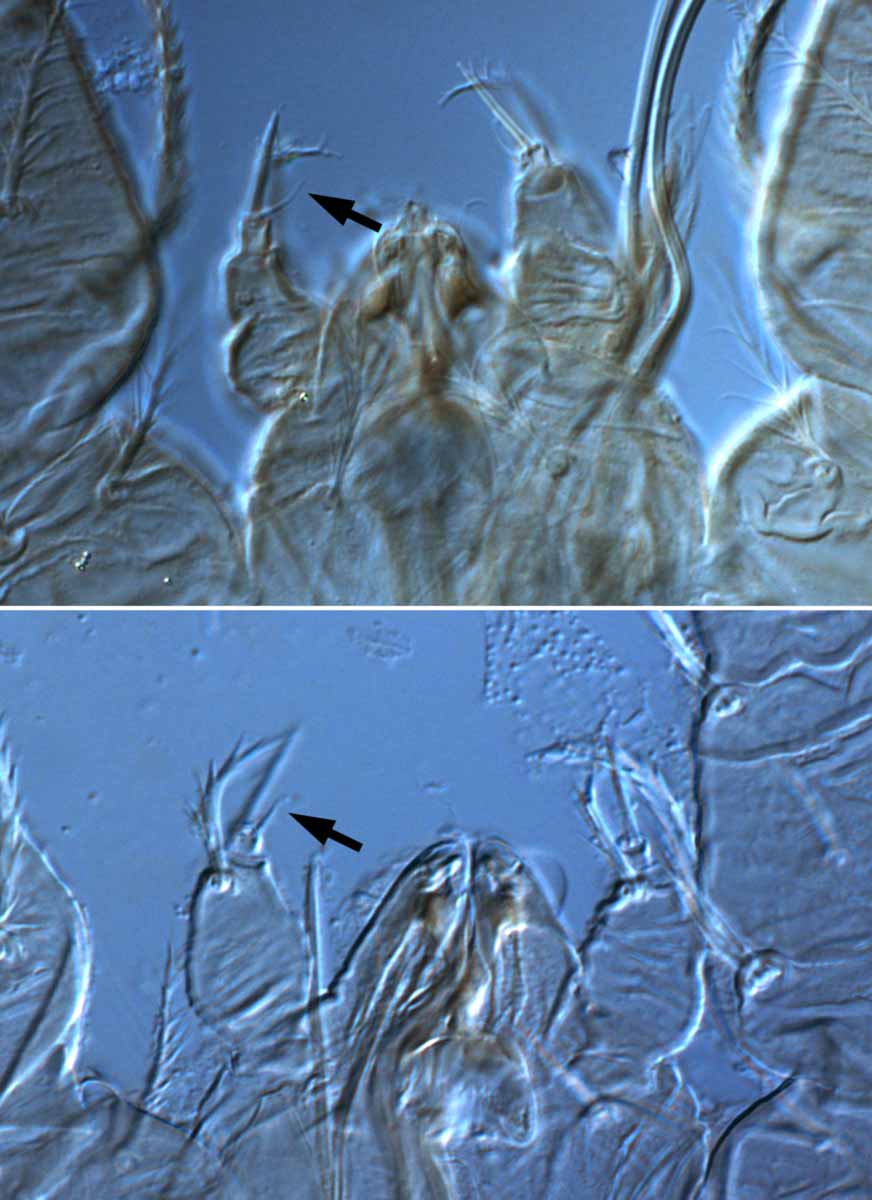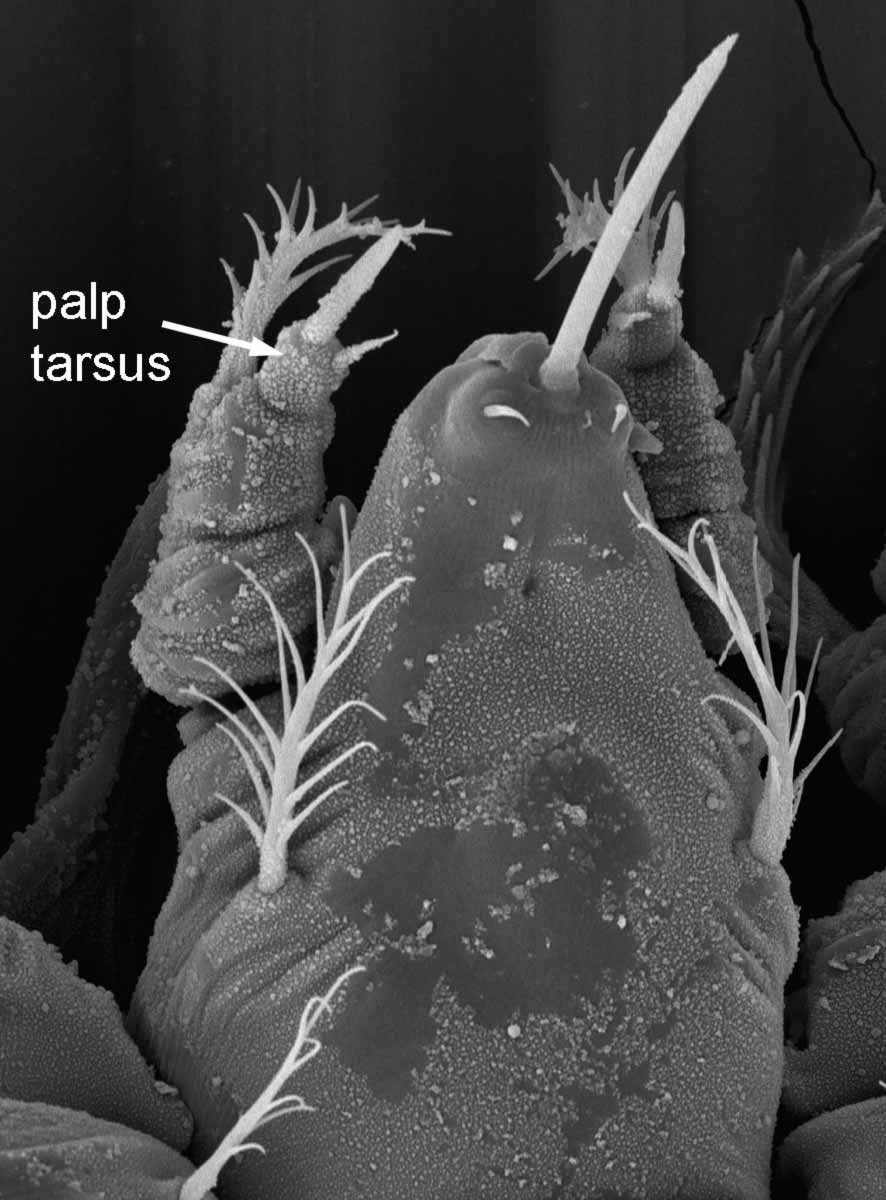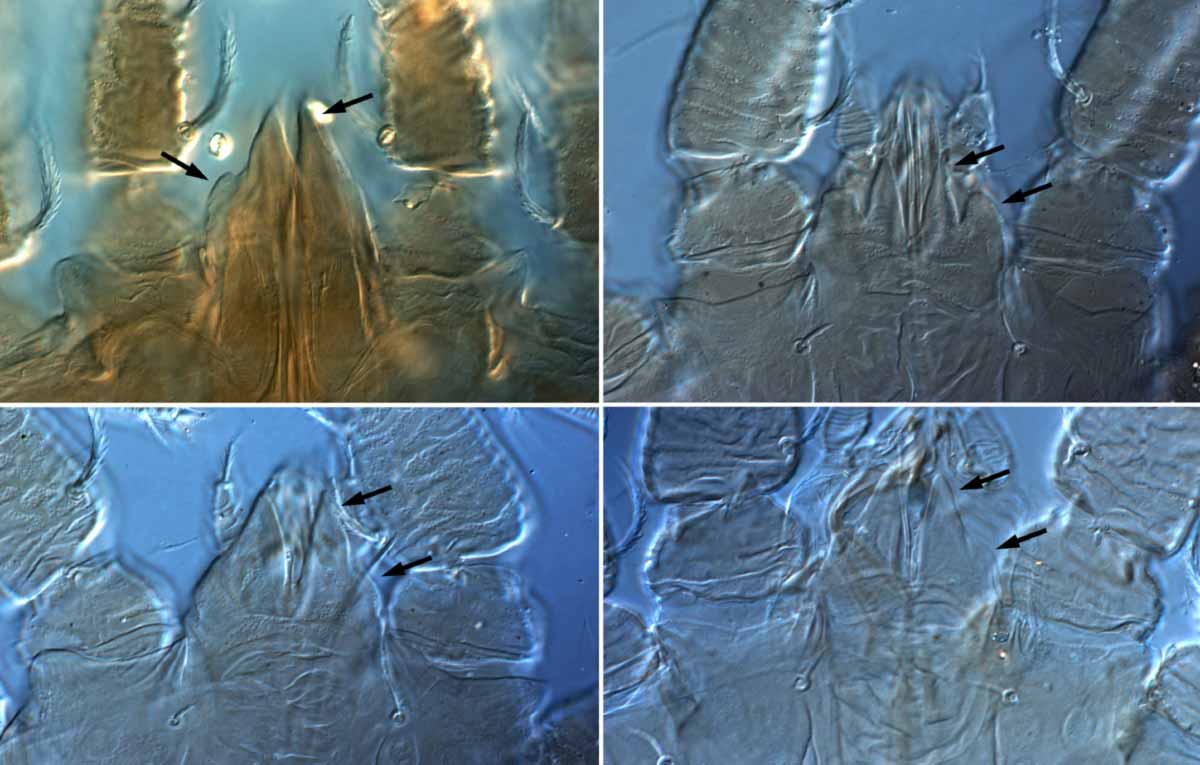Tenuipalpus pacificus
|
Fig. 1. Tenuipalpus pacificus female dorsum (specimen on left = holotype). |
|
Fig. 2. Tenuipalpus pacificus female dorsum (images: Gary Bauchan, USDA-ECMU). |
|
Fig. 3. Tenuipalpus pacificus female posterior dorsum. |
|
Fig. 4. Tenuipalpus pacificus female posterior dorsum (image: Gary Bauchan, USDA-ECMU). |
|
Fig. 5. Tenuipalpus pacificus female prodorsum. |
|
Fig. 6. Tenuipalpus pacificus female posterior venter (top left = holotype). |
|
Fig. 7. Tenuipalpus pacificus female posterior venter (image: Gary Bauchan, USDA-ECMU). |
|
Fig. 8. Tenuipalpus pacificus female posterior venter (image: Gary Bauchan, USDA-ECMU). |
|
Fig. 9. Tenuipalpus pacificus female ventral lateral cuticle pattern, anterior to coxae III (left = holotype). |
|
Fig. 10. Tenuipalpus pacificus adult female ventral lateral cuticle (image: Gary Bauchan, USDA-ECMU). |
|
Fig. 11. Tenuipalpus pacificus female palp - arrow indicates short tapered seta. |
|
Fig. 12. Tenuipalpus pacificus female ventral hypostome, indicating palp (images: Gary Bauchan, USDA-ECMU). |
|
Fig. 13. Tenuipalpus pacificus female - anterior projection on anterior margin of prodorsum (top left = holotype) (arrows indicate central fork and lateral bump). |
|
Fig. 14. Tenuipalpus pacificus male dorsum, with hatched eggs (images: Gary Bauchan, USDA-ECMU). |
Authority
Baker
Species group characters
Teunipalpus caudatus species group
Characters
- setae c2, d2, e2 absent (Figs. 1-4)
- prodorsum mostly smooth with some weak areolae centrally; series of longitudinal-oblique folds laterally (Fig. 5)
- dorsal opisthosoma mostly smooth, with a few wrinkles (Figs. 1, 2, 4)
- setae f2, f3, h1 thick, curved (Figs. 3, 4)
- ventral plate not developed; cuticle posterior to setae 4a1-2 with transverse striae forming an oval shape (Figs. 6, 7, 8)
- genital plate weakly developed; cuticle between ag and g1-2 usually with broken striae forming patterns of short "dashes" (Figs. 6, 8), or cuticle with unbroken striae
- ventral lateral cuticle anterior to coxae III and lateral to setae 3a1-2 with a distinct pebble-like pattern (Figs. 9-10)
- ventral setae 3a and 4a are doubled = 3a1-2, 4a1-2 present (3a1 < 3a2; 4a1 = 4a2)
- palp tarsus with a long straight solenidion and a short, curved tapered seta (Figs. 11, 12)
- anterior margin of prodorsum with a forked projection, variable in shape and length - with two central projections flanked by two reduced projections/bumps (Fig. 13)
- male similar to female (Fig. 14)
Distribution based on confirmed specimens
Australia, Barbados, Brazil, Japan, Malaysia, The Netherlands, Panama Canal Zone, Panama*, The Philippines, Puerto Rico, Thailand, USA (CA, FL), Venezuela
* - allotype and paratypes
Hosts based on confirmed specimens
Orchidaceae: Aerides sp., Calanthe sp., Cattleya sp., Cypripedium sp., Dendrobium sp., Epidendrum sp., Grammatophyllum sp., Oncidium sp., *Phalaenopsis stuartiana, Phalaenopsis sp., Saccolabium sp.
Davallia fejeensis, Platycerium sp. (Polypodiaceae)
* - allotype and paratypes
Remarks
This mite is red when alive.
References
*Baker (1945); Collyer (1973); De Leon (1965c); Denmark (2010); Ehara (1956); Hatzinikolis (1986a); Meyer (1979); Meyer (1993); Mitrofanov & Strunkova (1979); Pritchard (1949); Pritchard & Baker (1952); Pritchard & Baker (1958); Rimando (1962); Smiley & Gerson (1995)
* = original description

